Hannah Bennett shares her family’s insights into the libraries of Auckland after their epic quest to visit all of them in 2024

It began, as many good conversations do, on a long family car trip. ‘I wonder what we’ll do this year?’ I asked the family—my husband J, our daughters eight year old M and four year old A and myself— one sunny afternoon in early January 2024. ‘Why don’t we try to visit every library in Auckland?’ asked M. ‘Sure!’ I answered, not realising exactly how many libraries that would be. Once we got home, I went to the Auckland Libraries website and, gulp, there were 56. Hmm. This was going to take some effort. Perhaps we’d agreed to an impossible challenge? But then again, we already visit our two closest libraries every week, so what was a few more?
In news that is surprising to no one: Auckland is huge. Around 5,000 square kilometres huge. The distance between the northernmost library, Wellsford, to the southernmost, Waiuku, is 138 kilometres. There are two libraries on islands in the Hauraki Gulf, Waiheke and Aotea/Great Barrier. In fact, Auckland has the largest public library system in Australasia, after the 2010 amalgamation of the local councils in Auckland to form the Super City (which also led to the establishment of Te Wheke, the amazing book-sorting system for inter-library loans). And we were about to find out exactly how large it is.
Auckland has the largest public library system in Australasia
So our quest began: 56 libraries in 52 weeks. Our family of four committed to spending our spare time in 2024 driving around the city, or taking public transport where possible, visiting all the libraries and borrowing as many books, puzzles and audiobooks as our library cards would allow.
Our first task was to set the ground rules to give our quest some structure. The library had to be visited by at least two of our four family members (no solo trips by parents when everyone else was busy); we had to take a photo of ourselves outside the library; and visiting multiple libraries in one day was permissible, to reduce the number of car trips we took, as long as we browsed and borrowed at least one book at each library—no running in and out again. We also decided to document our journey on Instagram, taking photos and writing notes on each visit.

Across the city, we encountered libraries that were almost brand new, others in buildings 100 years old (such as Grey Lynn library, pictured above), still others in church basements, buses or portable buildings while their main buildings were being renovated. Some had vibrant colours and cosy spaces to read a book, others had functional areas perfect for studying or working. Lots of them had eye-catching displays about local history, or quirky posters or artworks. All of them were staffed by friendly, welcoming librarians.
We found that the libraries across the city could be grouped into twos or threes, and this made for excellent weekend and school-holiday day trips (tip for other families: we found three libraries in one day was our maximum while still enjoying the expedition). And we got the kids involved with the planning: we have a map of Auckland on our wall, so they would point to a particular area and together we’d look for libraries and other interesting places to visit nearby—parks, beaches or playgrounds we’d never been to, delicious eateries or good coffee—then head off with books to return and some snacks for the journey. When I think more deeply about it, this was the underlying motivation for our quest: we wanted to discover parts of Tāmaki Makaurau that we hadn’t visited before, encouraging us to get out of our little bubble of school, work, supermarket, local park.

We also found that it was easy to add a library trip when we were on our way elsewhere, even when the library wasn’t the destination: heading north to the Bay of Islands? Warkworth and Wellsford libraries are close to SH1, so we visited one on the way up, and one on the way back. What about driving south? Taakaanini and Papakura libraries were excellent stops as we drove to the Bay of Plenty. The most far-flung library was, as you’d expect, the hardest to visit: Aotea/Great Barrier Island. Unless you own a boat, your options are a 40 minute plane ride or four hour ferry trip. But turning it into a long weekend stay on the island made the trip worth the effort, allowing us to explore a place we’d always wanted to visit, as well as tick another library off the list.

Throughout the year, we had a lot of conversations about libraries with our kids. We talked about why we like them, and why they are important. At one point I asked the kids what would be in their ideal library. The answers ranged from predictable (‘lots of books’, ‘somewhere nice to sit’, ‘exhibits of books for different events or seasons’) to fanciful (‘chandeliers’, ‘ice cream sundae bar’, ‘ballet classes’), with some creative and innovative ideas in between (‘areas with dim lighting for people with sensory needs’, ‘soundproof walls around the kids’ area so we can be noisy’, ‘community gardens or pātaka kai [food sharing pantries]’, ‘open from 6am until 9:30pm so we can go before school or after dinner’).
But the big question we kept coming back to was: we own hundreds of books, so why not just stay home and read? For our whānau, a library is a critical ‘third space’. Somewhere we can go and just be. Bump into friends. Find books on our new hobbies. Attend a storytime or talk. No money required.

After all, gone are the days of libraries being reverent spaces staffed by scowling librarians telling you to be quiet. This year, we came across: a vibrant storytime with music and bubbles at New Lynn; ping pong tables in around half of the libraries; teenagers hanging out together and reading graphic novels; a video game tournament at the Tupu Youth Library in Ōtara. We saw posters and flyers for events ranging from knitting groups, dumpling making, New Zealand Sign Language meetups and storytimes in many different languages, to Latin classes, computers for seniors, CV advice and book discussion clubs. Some libraries had free facilities for making a cup of tea or coffee. Others had little red trolleys so you could move your books around without carrying them all. There were makerspaces with 3D printers, sewing machines and an audio/visual recording studio. If you can think of an indoor activity, a library in Auckland is probably offering it. And if not, they’ll help you book a space to host it yourself.
There are other community spaces that provide affordable event or workshop hosting, of course. But the unique selling point of a library is a space that mixes event attendees with people looking for books or DVDs, or searching out a cool space in summer or warming up in winter, or just passing through on their way to the community centre next door.

In this political climate, with Prime Minister Christopher Luxon telling councils to stop focusing on wellbeing and instead return to core activities— ‘must-haves, not nice-to-haves’— I’m left wondering how our library service will be classified. Is it a must-have, or a nice-to-have? My whānau is firmly of the view that libraries are a must-have if we want to encourage diverse, vibrant and exciting communities across the city. After all: what makes a city liveable? Should a council just be in charge of resurfacing roads, sorting out water, handing out building consents and running public transport? Or is it also a provider of facilities that enrich the parts of our lives that don’t revolve around work or school? If councils reduce funding for our libraries, or consider closing some or all, where will different groups in our neighbourhoods encounter each other? What effects will that have on our local communities and our city as a whole? There’s no single, definitive answer to these questions. But I hope we don’t have to find out.
For our whānau, a library is a critical ‘third space’.
Auckland Libraries’ 2024 Year in Review says that a whopping 11.4 million physical items were borrowed from the library network (with around 406,000 active members of the library service, that’s about 28 books per person). At times it felt like at least half of those 11 million items were at our house, judging by the piles of books, magazines and puzzles that grew like mushrooms in the corners of every room of our home last year. But in 2024, what was even more impressive to me was the scale and breadth of our beautiful city, Tāmaki Makaurau. From forests to beaches, urban to rural, we checked it all out.
Best of the Quest
I don’t want to single out too many libraries, because each is unique. But we did have a few favourites that stick out in our memories:
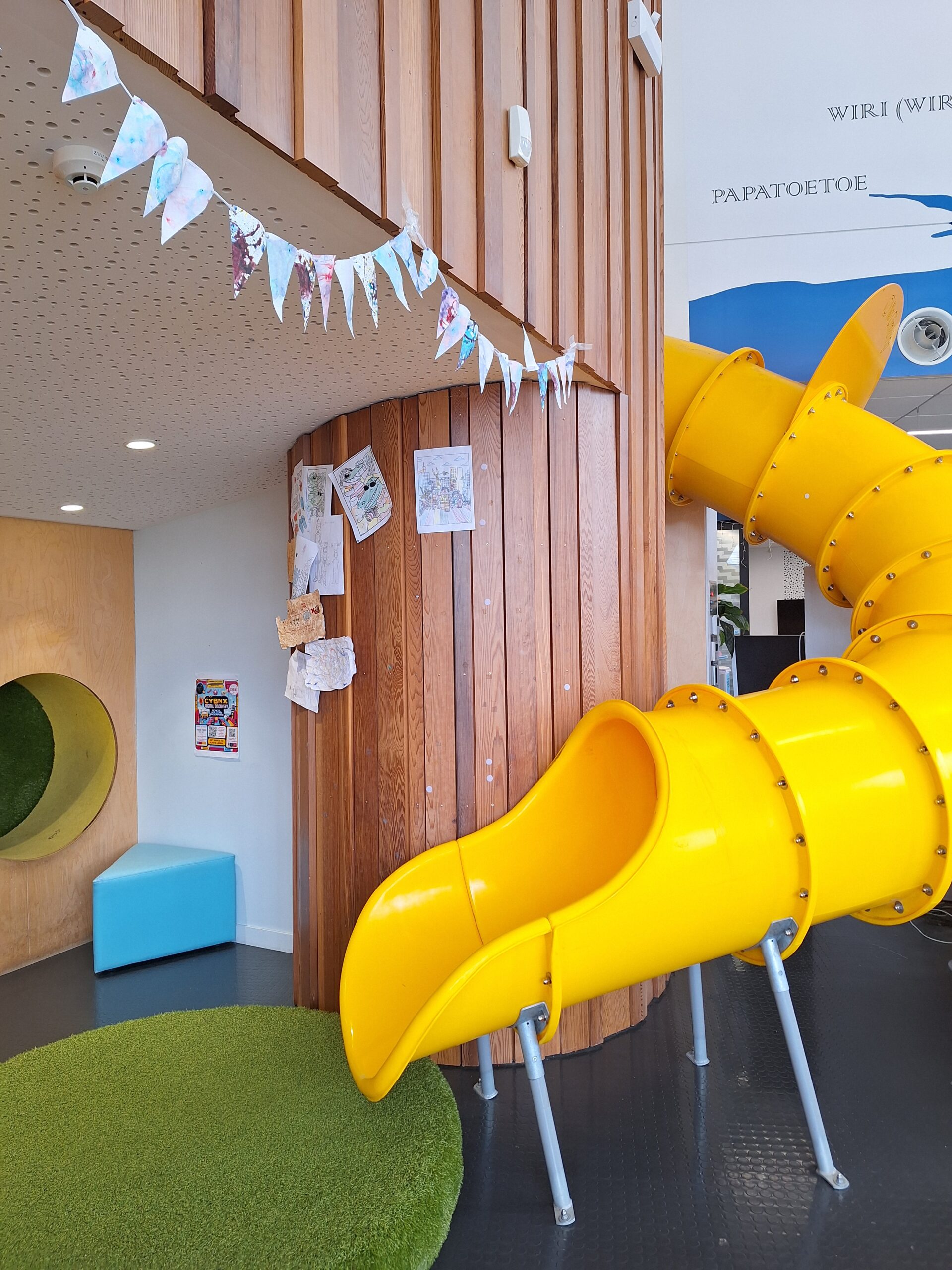
Most surprising things we found: Taakaanini (slide!), Albany (rooster display!), Māngere Town Centre (ukulele group practice in the library!) Pictured: the slide at Taakaanini.
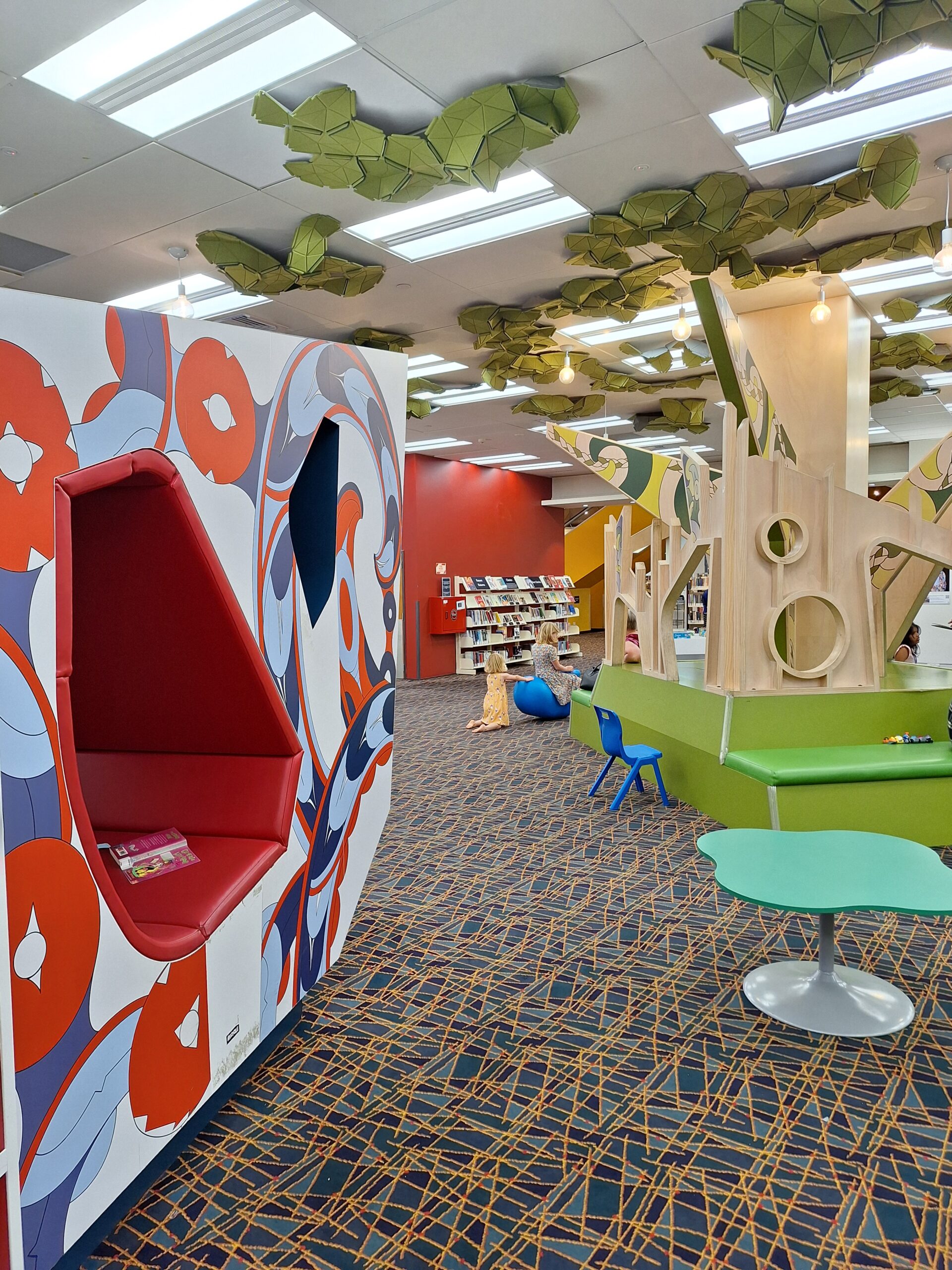
Best reading nooks: Devonport, Te Manawa (Westgate), Waiheke, Central. Pictured: Central Library.
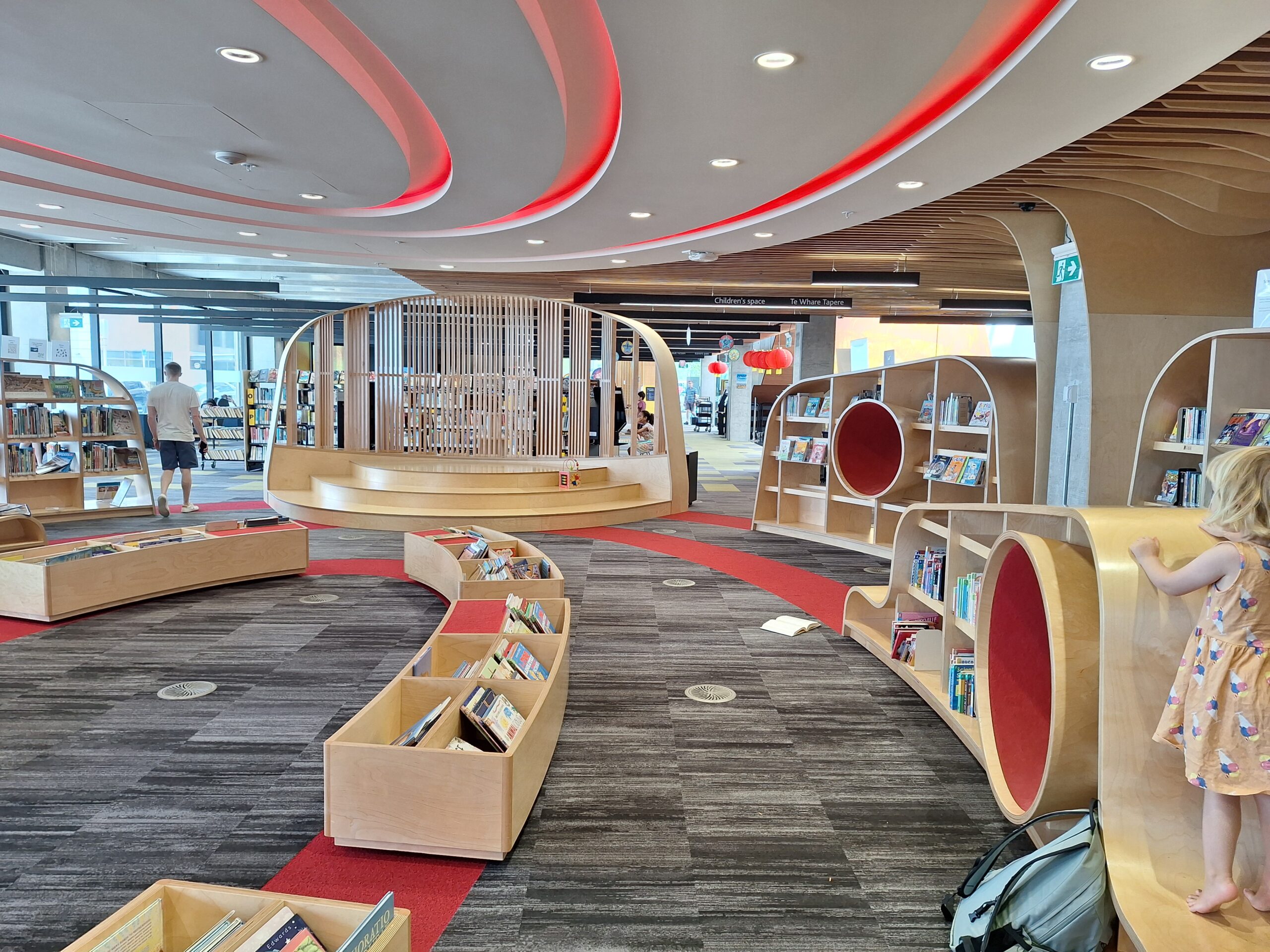
Best options for multi-tasking: Onehunga/Pukehoke/Ōtāhuhu (community centres/art galleries/swimming pools in the same building), Te Manawa (Westgate) (big makerspace with lots of different facilities, and the nearby Kopupaka Reserve playground). Pictured: Te Manawa Library.
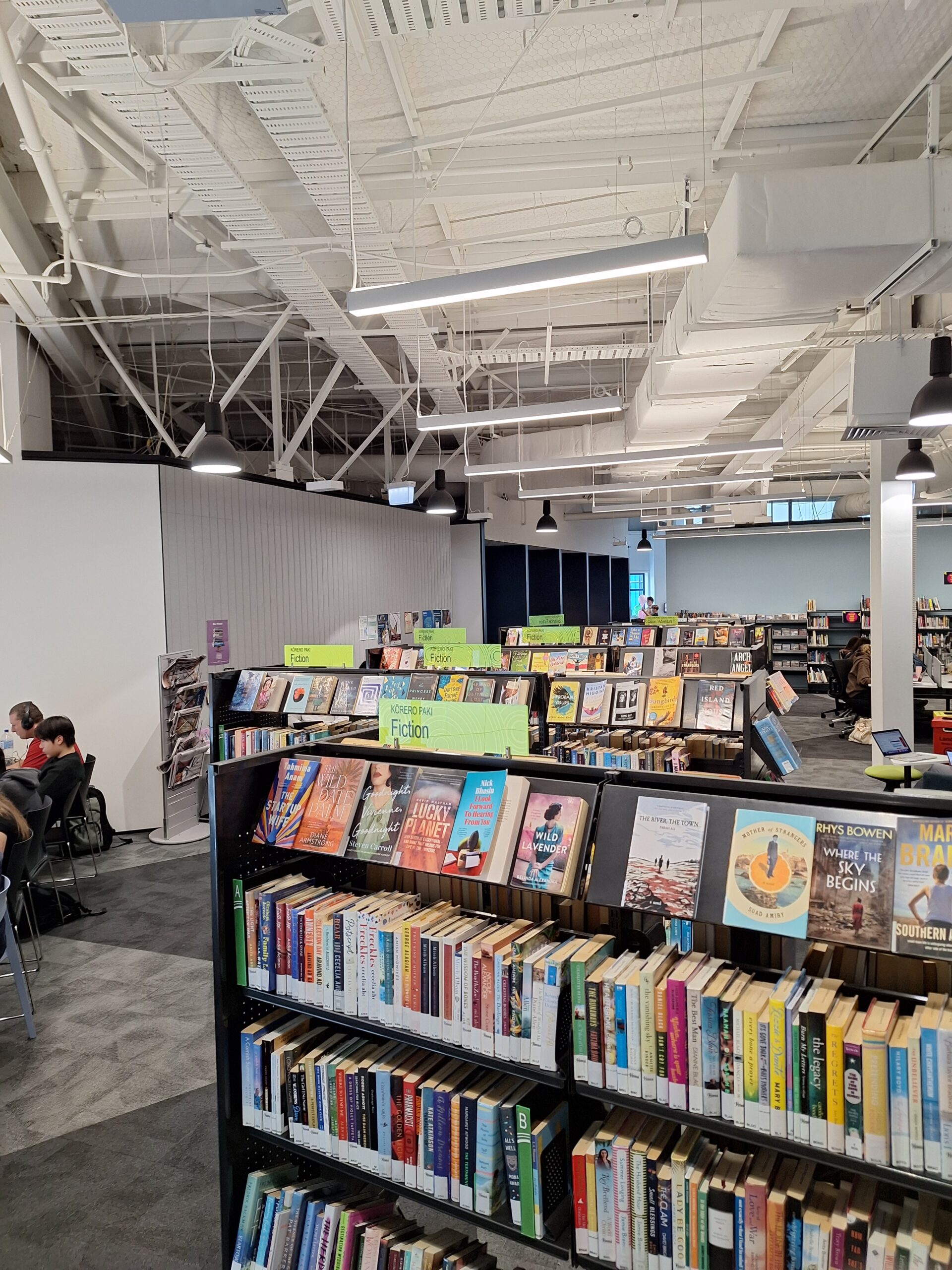
Best option for a rainy public holiday: Botany (open 362 days a year! It’s just past the movie theatre and video games…).
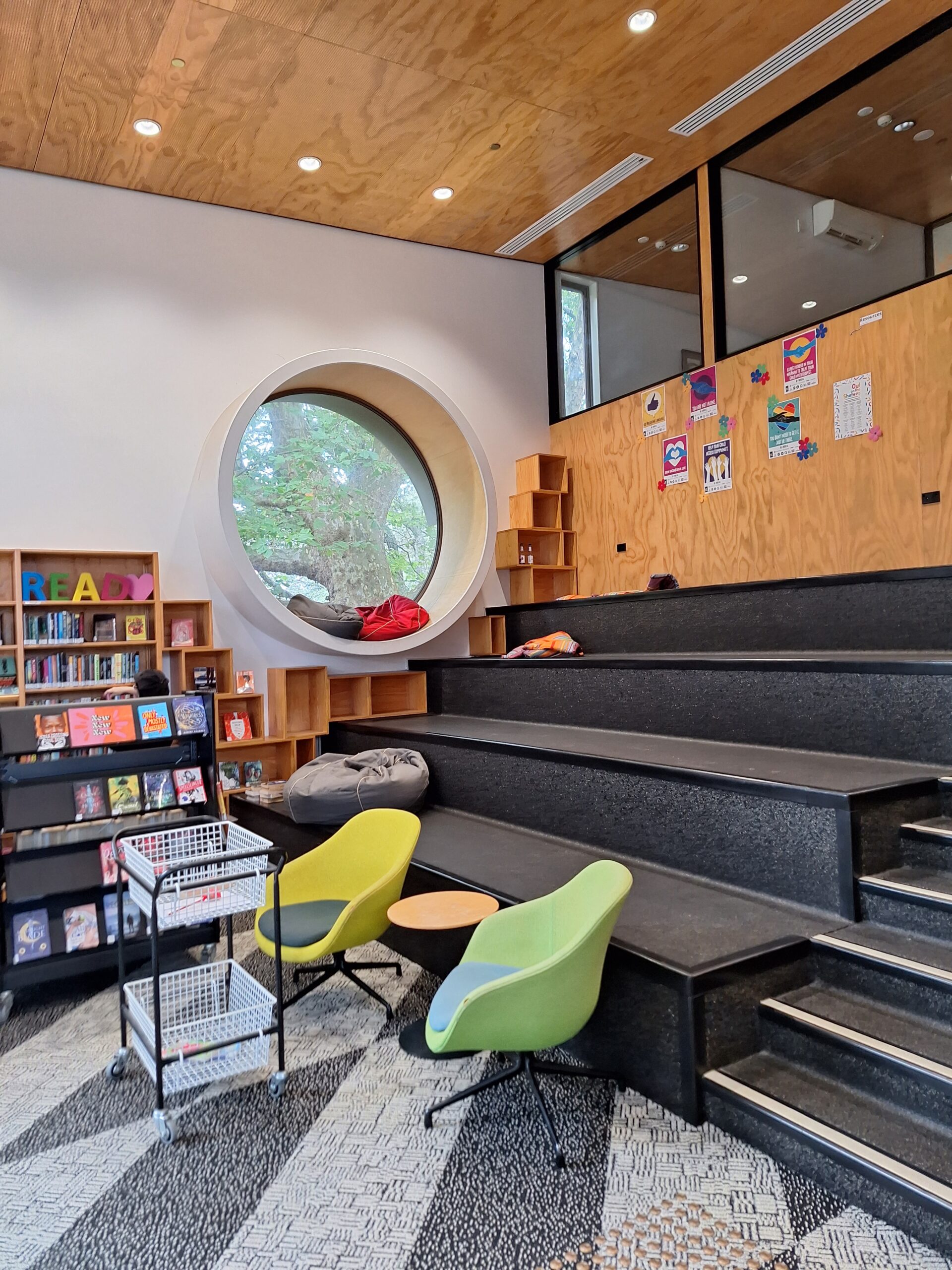
Best library to include on a day trip: Devonport and Takapuna (playground and beach across the road); Māngere and Ōtara (markets next door on Saturday mornings); Rānui, Titirangi and Glen Eden (on the way to the Waitākere Ranges); Central (close to the art gallery and Aotea Square); Whangaparāoa (family-friendly beaches nearby); Māngere Bridge (Ambury Farm and Te Pane o Mataoho/Te Ara Pueru/Māngere Mountain are not far away and are excellent places to explore). Pictured: Devonport Library.

Hannah Bennett
Hannah Bennett is a professional book obsessive. She edits, proofreads and translates books to make money to buy more books, while being surrounded by shelves bending under the weight of books and tripping over piles of books. She lives in Tāmaki Makaurau with her husband and two daughters. When she’s not reading, she’s thinking about reading. Or libraries.



